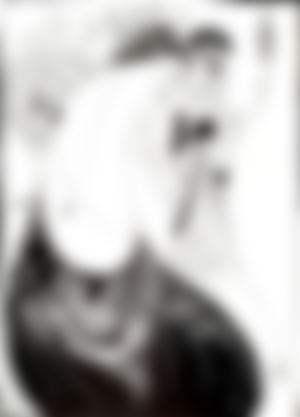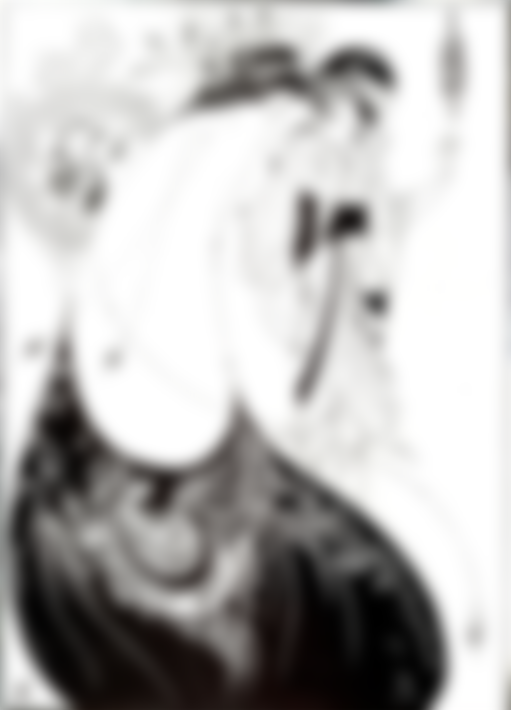Quizzes & Puzzles 17
Some new problems with which to exercise the brain. But first a look at answers and solutions to Quizzes & Puzzles 16. New problems below the image (cartoon).
Answer to Quiz 16:1
Agatha Christie wrote a book, "A Pocket Full of Rye", which is based on a nursery rhyme. There are three murders in the book. For the first one, a poison derived from a tree was used. What is this poison called?
The same tree provides an ideal material for a once powerful military weapon. It has been claimed to have been decisive for the outcome of the "hundred years war" between France and England. What sort of weapon was that?
The poison was taxine, which is found in the yew (or yew tree), Taxus baccata. The red part of the berry is the only part of the yew which is completely free from poison. The red colour is a carotenoid. But note that the seeds within the berries are vary poisonous! If they are swallowed whole, however, they pass right through the body without releasing any taxine. But beware of chewing them! If you do, you can die. Children sometimes do, tempted by the red and tasty-looking berries.
Taxine is a narcotic, and in the past it was sometimes used for suicide; or to generate abortion, often killing the mother on the way.
In yew bark one has found a substance that stunts the growth of tumours. It also seems to suppress protozoic activity, something that could be useful for medical purposes.
In Europe, the yew is probably the most long-lived tree. Two thousand years old ones are found in England.
The yew provides a very hard, strong, and elastic wood, which is ideal for bows; and it was the material from which long-bows were made. The English archers, armed with these bows were a decisive force in some wars during the Middle Ages, most notably some stages of the hundred years war between England and France - a number of wars fought between the two countries during the period 1337-1453.
Answer to Quiz 16:2
In Germany, a style of art and design, in many ways a reaction against the industrialism, got its name after a publication, a name used in some other countries too.
In France, the "new" style was called something else, a term used by the English as well.
I ask for both these names, the German, and the French/English.
The style is called "Jugend" or "Art Nouveau". The German name is taken from "Die Jugend", a cultural periodical published in Munich from 1896.
It is hard to give an exact definition of Art Nouveau, but it has its roots in England, in the Morris movement in the 1860s. There one tried to save art and design from the devastating effects of industrialism.
Another point is that it was the first post-Renaissance European style not building on Graeco-Roman Antiquity. Instead influences were taken from the old Celts and Scandinavians; from China and Japan; and from Egypt.

If you want to see examples, look at Casa Mila in Barcelona, by architect Antoni Gaudi; or at the art of Aubrey Beardsley, which combines drawing and ornament in a way being characteristic of Art Nouveau illustration.
Answer to Quiz 16:3
Which island in the West Indies was initially, by it's European discoverer, named after John the Baptist?
It was Puerto Rico, by Christopher Columbus named San Juan Bautista, John the Baptist.
The town that grew where they landed was called Puerto Rico, the rich port. Later they switched the names. The town is now called San Juan, St. John, and the island Puerto Rico.
@Adobe101 had the right answer.
Answer to Quiz 16:4
In the year 1900 Europe had two double monarchies. In 1920 none of them remained, each had been divided into two separate states. In one case into two monarchies, in the other into two republics; four countries still existing, although for some years in between one of them did not.
Which are these four European countries?
The double monarchies were Austria-Hungary, and the United Kingdoms of Sweden and Norway. The two latter are today two separate kingdoms; Austria and Hungary are two separate republics. The one which didn't exist all the time was Austria, which was part of Hitler's Third Reich after The Anschluss in 1938 and till the end of WWII.
Answer to Quiz 16:5
Which hormone regulates sleep, and in which gland is it produced?
The hormone is “melatonin”, and it is produced in the pineal gland. You can read more about melatonin and sleep in Blue Light, Blindness, Sleep Disorder & Cancer and about the pineal gland in The Pineal Gland - The Third Eye.
Answer to Puzzle 16:6
This sequence is based on a specific principle. Can you figure it out? The question this time is: which are the next two numbers?
0 0 1 3 6 10 3 9 4 0 9 7 6 …
Clue: A very common everyday object can offer some help.
The sequence continues with ...6 7.
The everyday object that could provide help is a clock-face (old clock with hands).
The sequence begins with zero, then add zero, then add 1 to the previous result, add 2 to that result, add 3, and so on. Add one more for each step. You get (0) (0+0=0) (0+1=1) (1+2=3) (3+3=6) (6+4=10). The next steps if you count on the clock is (10+5=15=3) (3+6=9). Continue in that way and you get the sequence in the question:
0 0 1 3 6 10 3 9 4 0 9 7 6...
Then it becomes ...6 7 (the answer to the question) and further
... 9 0 4 9 3 10 6 3 1 0 0 1 3 6 10 3 9 4 0 9 7 6...
As you can see, it is the same sequence repeated, alternately in the reversed and the original order, in all eternity. If you are a numerate person, you easily realise why.

And now some new exercises for brain & memory...
This time we have a theme: trains & railways. All the quizzes are in some sense related to that topic.
Quiz 17:1
In which country was the steam locomotive first introduced?
Quiz 17:2
Future trains may very well use magnetic levitation instead of wheels on rails. Currently, there is only one such train-link in the world carrying passengers, it also happens to be the world's fastest train.
In which country can you find that train?
Quiz 17:3
A famous Russian author died in a railway station. The main character of one of his most famous novels also had a death associated with trains.
Who was the author, it's one of the greatest novelists of all times, and who was the main character of this novel?
Quiz 17:4
Trains play a central role in several of Agatha Christie's books. I ask for the title of one of them, in which the bad main character goes under an alias, which is also a noble title.
What is the name of this murder story?
Quiz 17:5
In pop/rock music, synthesizers were gradually introduced during the 1970s. A German band, pioneers with their synthesizer-based music and machine-like style, made a song (in 1977) about a railway service, whose name is also the title of the song.
Which band was it, and what is the name of the song?
Quiz 17:6
In 1976, a famous English musician, one of the greatest rock artists of his era, released an album with a title indicating a train journey. The tile of this album (and title track) is mentioned in the lyrics to the song I asked for in the previous question.
Who was the musician and what's the album called?
You'll find answers and solutions in the next “Quizzes & Puzzles”.
Quizzes & Puzzles has its own label in my Index, where all issues of the series can be found.
In my INDEX, you can find all my writings on Read.Cash, sorted by topic.
Copyright © 2022 Meleonymica/Mictorrani. All Rights Reserved
(Cartoon by Christian Dorn/Pixabay, CC0/Public Domain.


I also just found out that taxine is a narcotic, maybe this item has disappeared or has been renamed and is very dangerous for the womb. maybe if the narcotic ingredients were still available, many people would use it because until now there are still many abortion cases but they take other actions.